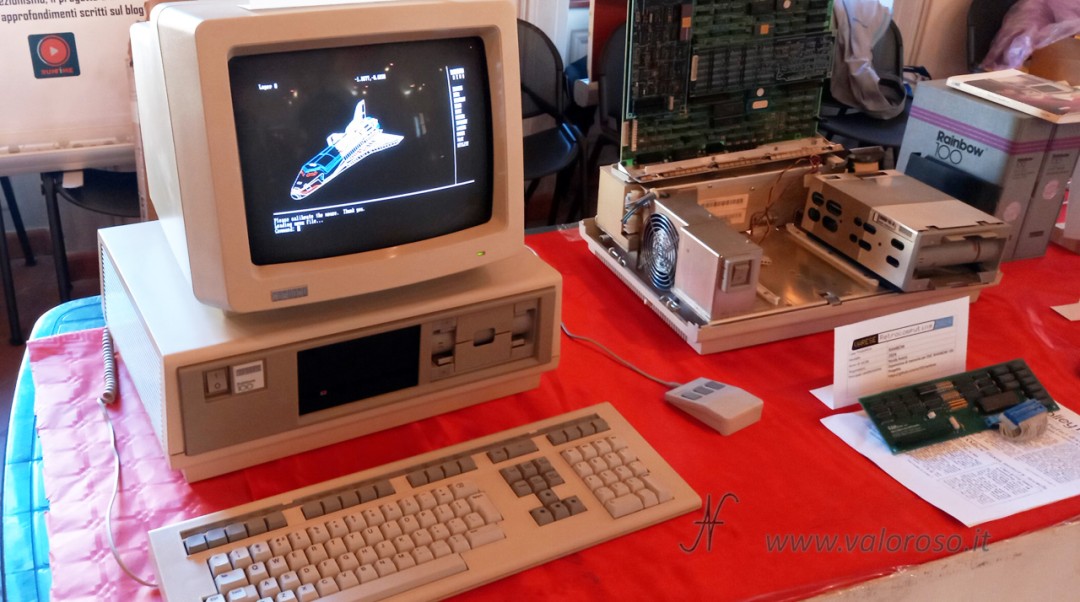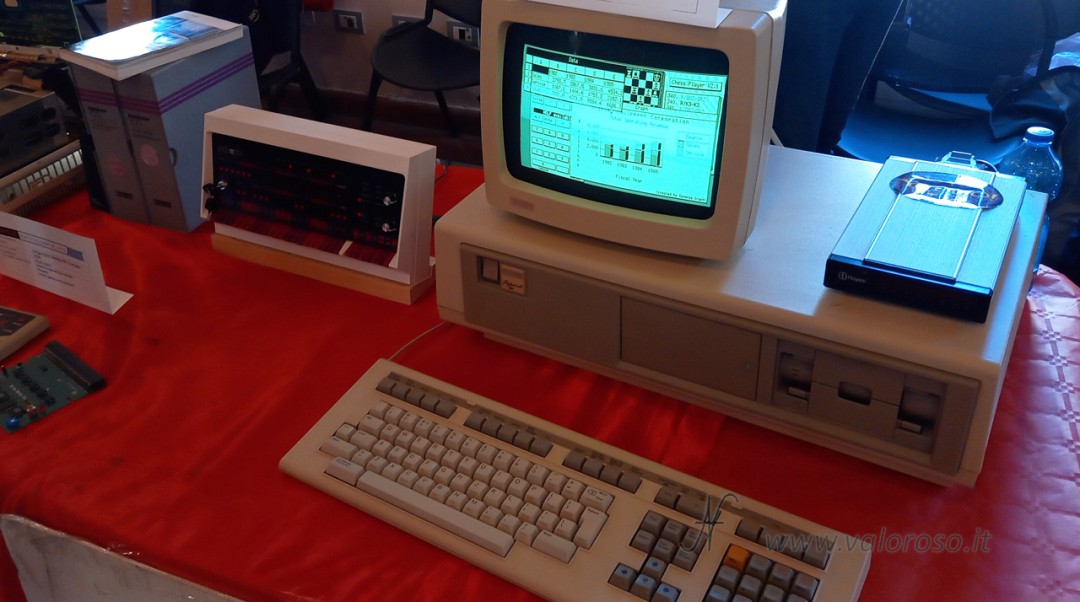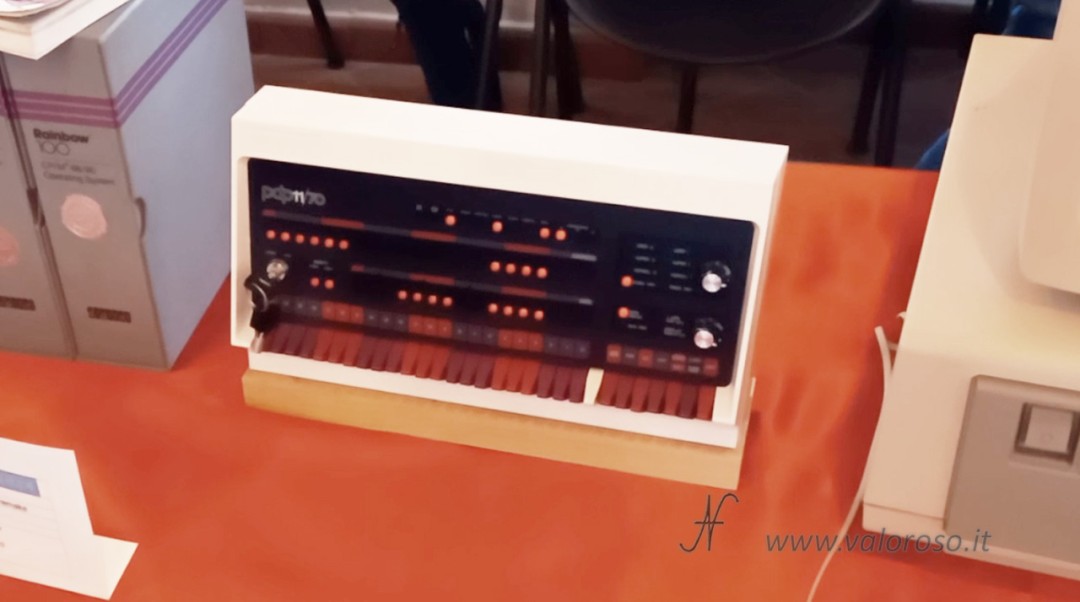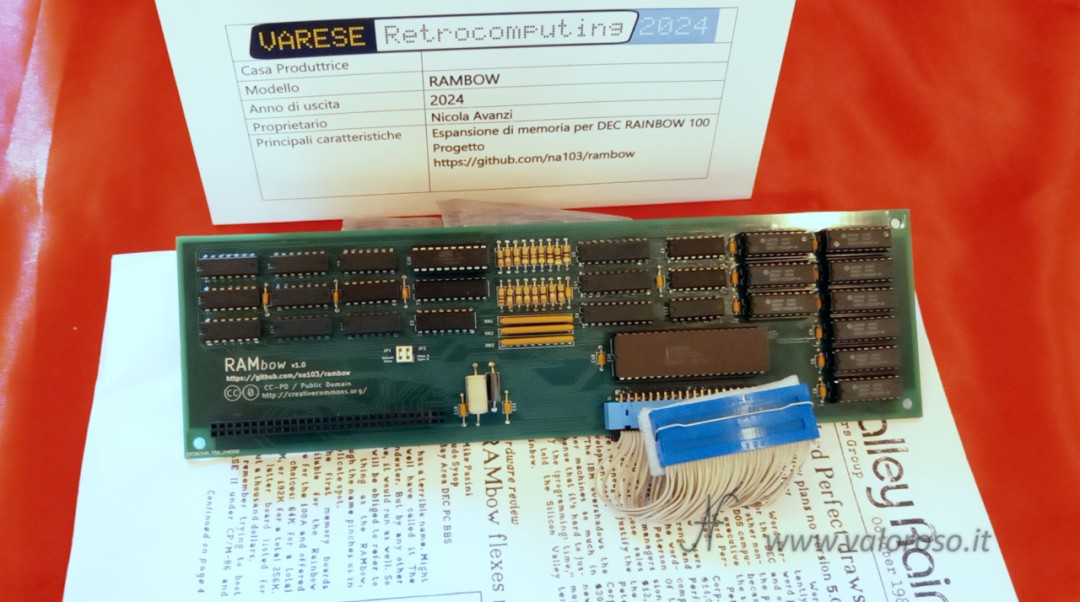At Varese Retrocomputing 2024, I had the pleasure of meeting Nicola Avanzi of RetroCampus, a retrocomputing enthusiast and expert. On this occasion, Nicola showed us three historical models of the Digital Equipment Corporation (DEC): the DEC Rainbow 100, the DEC Professional 380 and a scale replica of the DEC PDP-11/73.

During the interview, Nicola also presented a RAM expansion board, which he designed himself for the DEC Rainbow 100A. The result of historical research, the RAMbow allows you to
expand the first version of the Rainbow to 896Kb of memory.
Let's find out in detail these fascinating models and their technical characteristics.
DEC Rainbow 100: an innovative computer from the early 80s
The DEC Rainbow 100 was launched in 1982, at a crucial time for the personal computer market. Digital Equipment Corporation, already famous for its minicomputers such as the PDP-11, decided to enter the PC market, after the success of IBM PCs. However, DEC took a different approach, developing a computer with an unconventional architecture.

The DEC Rainbow 100 is a dual-processor system, with a Z80 and an Intel 8088, capable of executing, with the special version of CPM 86/80, both 8-bit (CP/M-80) and 16-bit (CP/M-86) programs. The two processors communicate via 62KB of shared memory (dual port RAM) and use separate buses. This design allows the DEC Rainbow 100 to run various operating systems, including a special MS-DOS version (not fully compatible with the IBM PC), Concurrent CP/M 86, UCSD p-System, and Venix.

Nicola showed us how this system can handle up to 896KB of RAM. This increase in RAM allows the DEC Rainbow 100 to run more demanding applications such as CAD and software development tools. During the interview, the computer was turned on and running Autodesk's popular AutoCAD software.
Another interesting feature of this computer is its drive, DEC RX50, which houses two 400KB floppy disks in a compact space, allowing you to access drives A: and B: alternately, using the same rotation shaft and a single head movement system.
DEC Professional 380: The power of PDP in desktop format
Alongside the DEC Rainbow 100, Nicola presented the DEC Professional 380, another DEC masterpiece. This line of computers, which includes the 325, 350 and 380 models, features the same chipset used in some of DEC's PDP-11 minicomputers, offering professional power and capabilities in a more compact and affordable package.

The DEC Professional 380 is equipped with a 11-bit J-16 processor and a 22-bit address bus, which allows it to handle up to 4MB of RAM. This configuration was well advanced for the 1980s and allowed it to run demanding applications such as CAD and software development at scale, making it ideal for use in enterprise environments.

During the demonstration, Nicola ran Synergy 2.0, an environment for running windowed applications. Synergy allowed you to run multiple applications at once, such as a spreadsheet, calculator, and even a chess game. Fun fact: Synergy's windowed interface didn't have mouse support and was used with the keyboard!
Replica of the DEC PDP-11/73... to scale
To complete the exhibition, Nicola showed a scale replica of the famous DEC PDP-11/73. This replica is based on the SIMH emulator, which runs on a Raspberry, offering a realistic simulation of the PDP control panel.

Another alternative, to emulate the DEC PDP-11/73, is to use a Terasic DE0-Nano FPGA.
The original PDP is a complex and imposing system, but Nicola shows us a reproduction in a compact format, demonstrating how it is possible to relive the experience of these historic computers thanks to modern emulation.

The RAM expansion board designed by Nicola Avanzi for the DEC Rainbow 100
One of the most interesting parts of the interview was the presentation of the expansion board designed by Nicola for the DEC Rainbow 100A: the RAMbow v1.0. This card allows you to increase the RAM up to 896KB in the first version of the Rainbow which by its design was limited to a maximum of 256KB of RAM.
To do this, it was necessary to move the Intel 8088 processor from the motherboard to the expansion board itself. This technical solution allows you to take advantage of all memory address lines, even those that are absent on the expansion BUS.
Here is the link to the project: https://github.com/na103/rambow

Subscribe to my channel and stay up to date
If you're a fan of retrocomputers and the world of vintage electronics, don't miss out on these exclusive retro-explorations! Subscribe to the YouTube channel (@ValorosoIT) to access experiments, interviews, and all content related to retro computers. I am also present on TikTok, Instagram, Facebook...